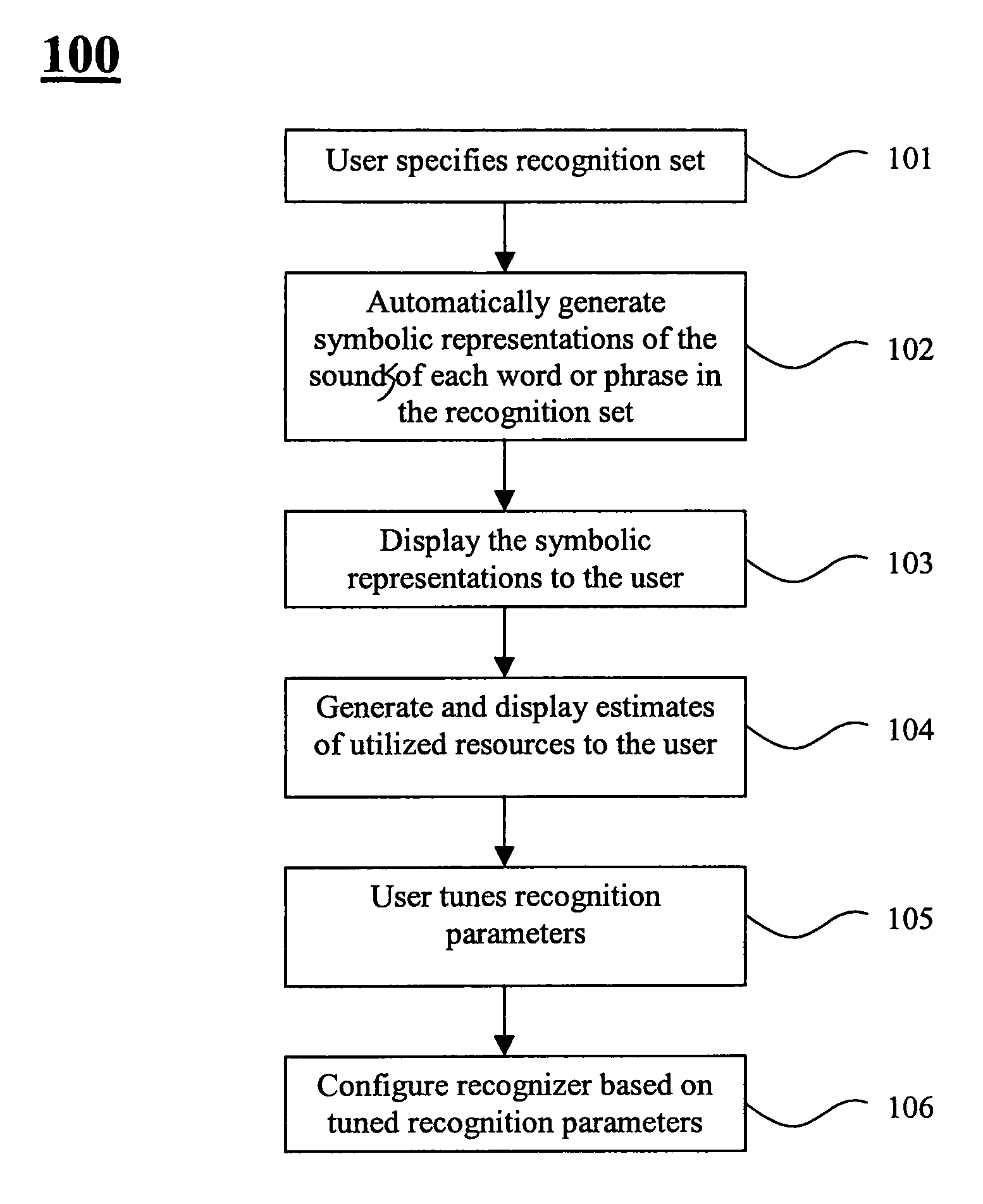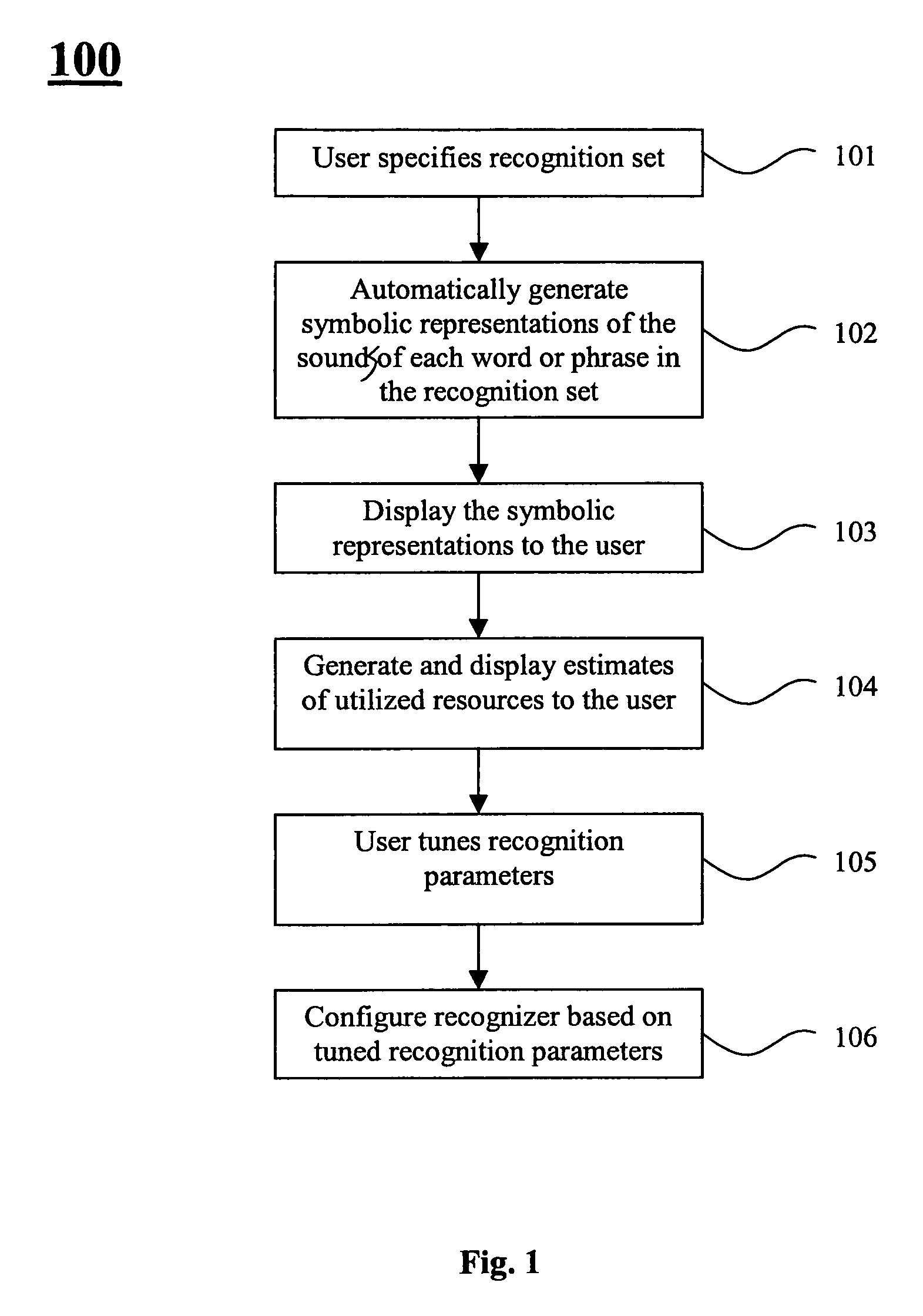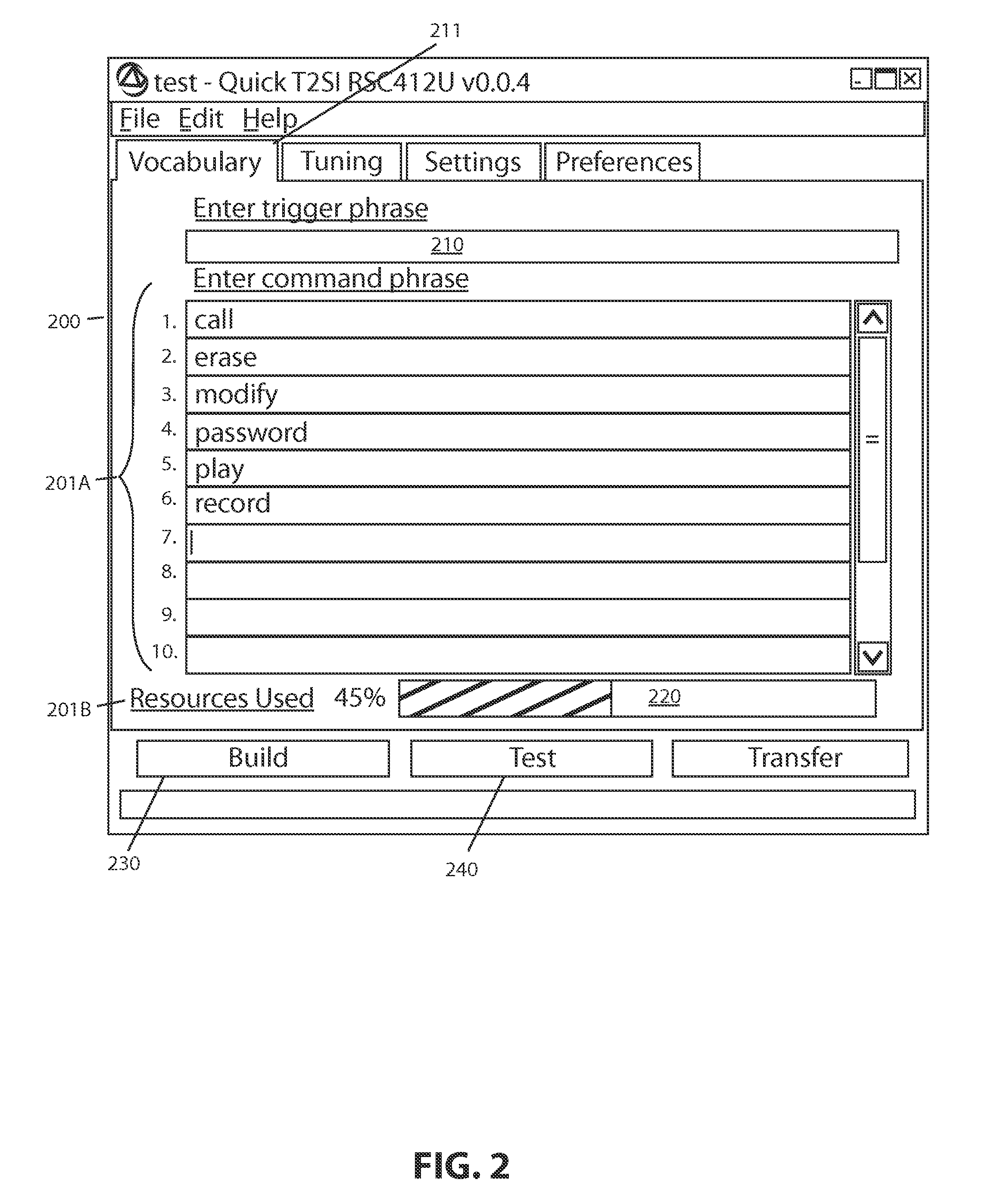Method and apparatus of specifying and performing speech recognition operations
a speech recognition and speech recognition technology, applied in speech recognition, speech analysis, instruments, etc., can solve the problems of speaker-independent speech recognition, limited general applicability, and inability to perform independent speech recognition devices, so as to maximize recognition accuracy and minimize computational requirements
- Summary
- Abstract
- Description
- Claims
- Application Information
AI Technical Summary
Benefits of technology
Problems solved by technology
Method used
Image
Examples
Embodiment Construction
[0037]Described herein are techniques for implementing speech recognition. In the following description, for purposes of explanation, numerous examples and specific details are set forth in order to provide a thorough understanding of the present invention. It will be evident, however, to one skilled in the art that the present invention may be practiced without these examples and specific details. In other instances, certain methods and processes are shown in block diagram form in order to avoid obscuring the present invention.
[0038]Embodiments of the present invention include a software design tool to design a speech recognizer. In one embodiment, a user is provided a design tool in which he / she may specify “utterances,” which are words or phrases in the recognition set (also referred to herein as a “vocabulary”) to be recognized. In one embodiment of the present invention, each utterance is described by a “pronunciation,” which is a symbolic representation of the sounds of each u...
PUM
 Login to View More
Login to View More Abstract
Description
Claims
Application Information
 Login to View More
Login to View More - R&D
- Intellectual Property
- Life Sciences
- Materials
- Tech Scout
- Unparalleled Data Quality
- Higher Quality Content
- 60% Fewer Hallucinations
Browse by: Latest US Patents, China's latest patents, Technical Efficacy Thesaurus, Application Domain, Technology Topic, Popular Technical Reports.
© 2025 PatSnap. All rights reserved.Legal|Privacy policy|Modern Slavery Act Transparency Statement|Sitemap|About US| Contact US: help@patsnap.com



